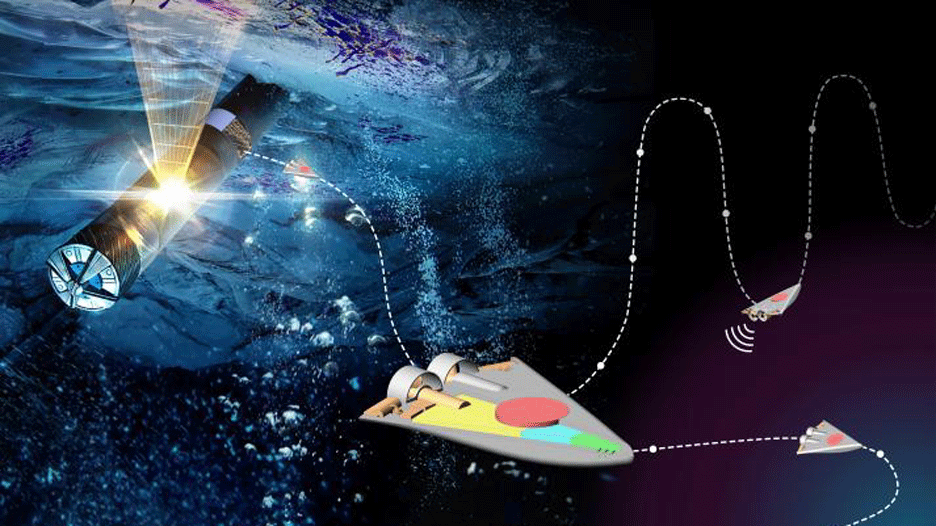
NASA develops swarm of swimming robots to "look for signs of alien life" in space
Researchers from space agency NASA are building a swarm of mobile phone-sized robots to swim through oceans on moons in space in search of extraterrestrial life.
Devised by robotics mechanical engineer Ethan Schaler at NASA's Jet Propulsion Laboratory, the project called Sensing With Independent Micro-Swimmers (SWIM) could form part of the organisation's 2024 mission to explore Jupiter's moon Europa.
The 12-centimetre-long robots, which would be equipped with a propulsion system, ultrasound communications system and specially developed chemical sensors to detect signs of life, would "flock" together to swim through oceans on the moon.

"Where can we take miniaturized robotics and apply them in interesting new ways for exploring our solar system?," Schaler said.
"The SWIM robots could flock together in a behavior inspired by fish or birds, thereby reducing errors in data through their overlapping measurements," NASA explained.
Robots could "explore a much larger volume of ocean"
NASA believes that SWIM will increase the likelihood of detecting evidence of life as the swarm of robots can cover larger water areas than a singular probe.
"With a swarm of small swimming robots, we are able to explore a much larger volume of ocean water and improve our measurements by having multiple robots collecting data in the same area," Schaler explained.
SWIM robots would tunnel through icy moon shells on a nuclear probe
The SWIM robots will be carried on one of NASA's nuclear-powered probes, which would be deployed from a space lander located on the frozen surface of the moon. The lander would act as the point of contact with mission controllers on Earth.
The probe will pierce through the miles-thick icy shell of the moon and then travel downwards through the frozen icy crust to the water.
Each probe will have space for around 48 SWIM robots, leaving room for other static instruments to investigate the oceans.
"A key innovation is that the mini-swimmers would be much smaller than other concepts for planetary ocean exploration robots, allowing many to be loaded compactly into an ice probe," explained NASA.
"That would leave plenty of room for more powerful but less mobile science instruments that could gather data during the long journey through the ice and provide stationary measurements in the ocean."
Project aims to "gain further knowledge about alien life"
NASA believes that the data gathered by SWIM robots on temperature, salinity, acidity and pressure could be used to gain further knowledge about alien life and determine whether any moons would be suitable for human habitation.
"Group data could also show gradients: temperature or salinity, for example, increasing across the swarm's collective sensors and pointing toward the source of the signal they're detecting," the organisation said.
The project forms part of NASA's commitment to exploring life on different planets which includes Super Ball Bot robots, which will be made from a tensegrity structure that can roll around the surface of planets and moons.
Renderings are courtesy of NASA/JPL-Caltech.